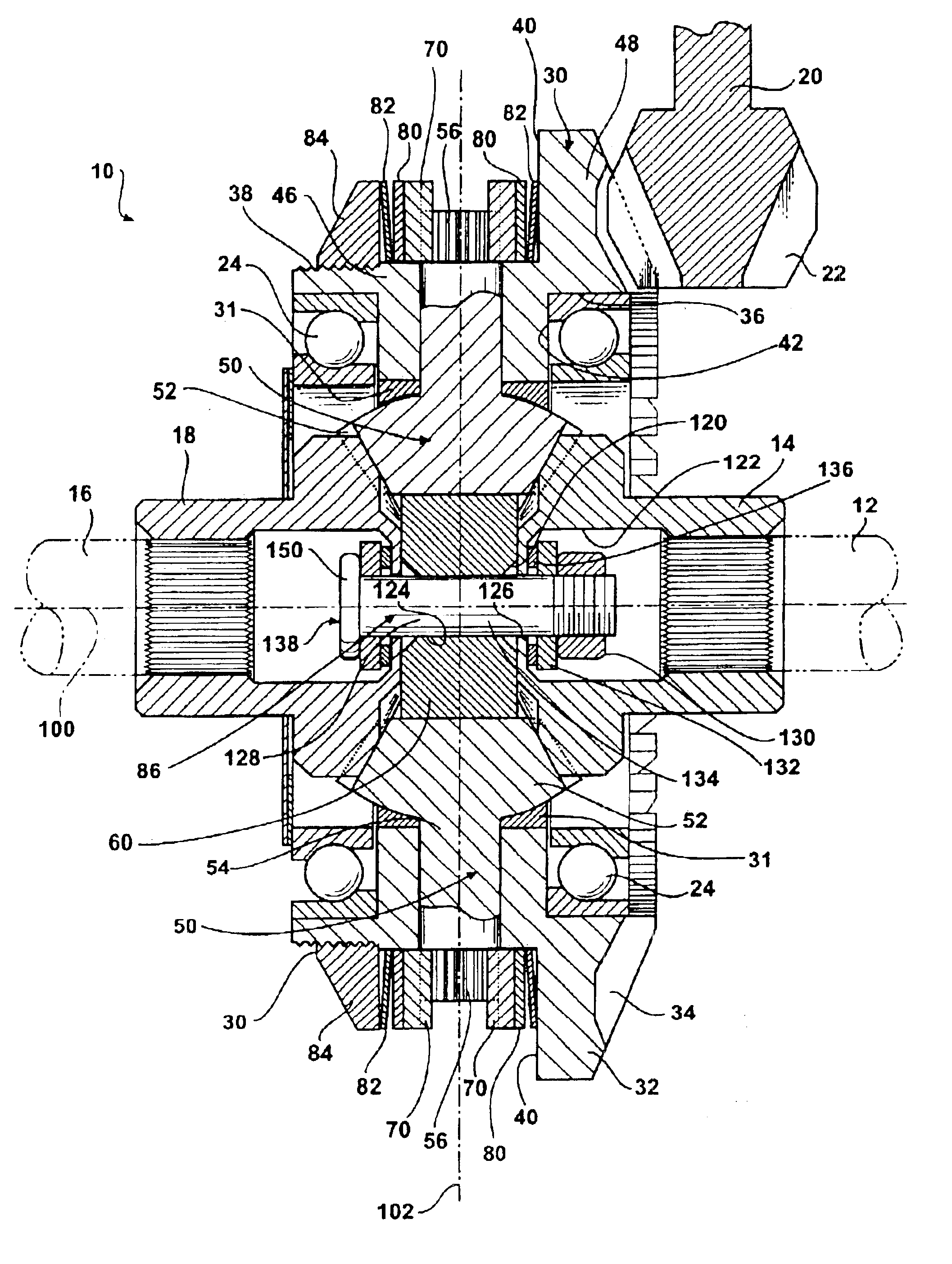Limited slip differential
a differential and slip technology, applied in the field of differentials, can solve the problems of difficult to make a compact unit, heavy differential, and high manufacturing cost, and achieve the effect of reducing material usage, assembly time and manufacturing cos
- Summary
- Abstract
- Description
- Claims
- Application Information
AI Technical Summary
Benefits of technology
Problems solved by technology
Method used
Image
Examples
Embodiment Construction
A differential 10 constructed in accordance with the illustrated embodiment is shown in FIG. 1. The differential 10 is illustrated in all figures as being assembled into an independent axle configuration, but it should be readily apparent to one skilled in the art that the differential 10 may be used in other configurations, such as a tubular or beam axle. The differential 10 receives an input torque from a drive shaft 20, and transfers the input torque to a first axle shaft 12 and a second axle shaft 16. More specifically, the drive shaft 20 engages the ring gear 30 and rotates the ring gear 30 about a longitudinal axis 100. The differential case typically found in differentials is eliminated. Instead, the ring gear 30 encases and locates the pinions 50 as well as the first side gear 14 and second side gear 18. A fastener assembly 86 retains and secures the side gears 14 and 18 and pinions 50 within the ring gear 30. The elimination of the traditional differential case allows for a...
PUM
 Login to View More
Login to View More Abstract
Description
Claims
Application Information
 Login to View More
Login to View More - R&D
- Intellectual Property
- Life Sciences
- Materials
- Tech Scout
- Unparalleled Data Quality
- Higher Quality Content
- 60% Fewer Hallucinations
Browse by: Latest US Patents, China's latest patents, Technical Efficacy Thesaurus, Application Domain, Technology Topic, Popular Technical Reports.
© 2025 PatSnap. All rights reserved.Legal|Privacy policy|Modern Slavery Act Transparency Statement|Sitemap|About US| Contact US: help@patsnap.com



